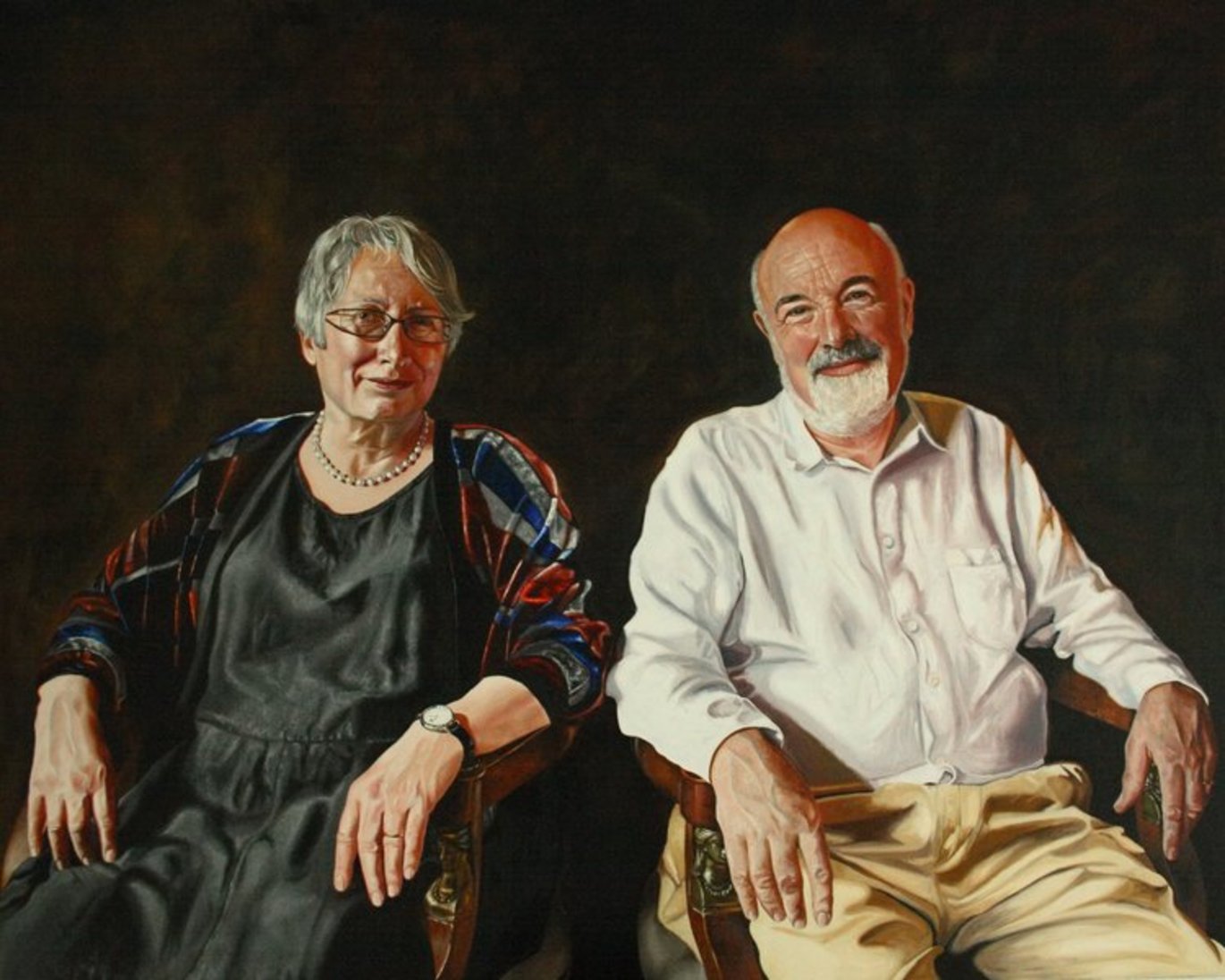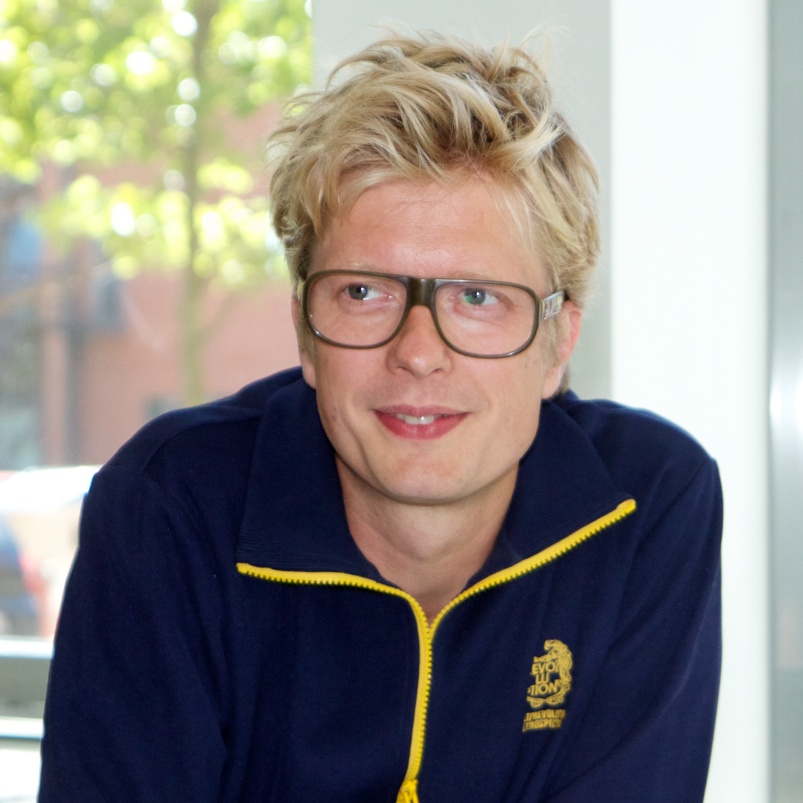Putting Language Into the Social Brain
Chris and Uta Frith are currently visiting the IMC. Their visit has led to this interesting conversation between Chris & Uta Frith and Kristian Tylén about language and the social brain. This article by Uta Frith was recently posted on www.frithmind.org.


Chris and I are visitors at the Interacting Minds Centre at Aarhus University during August and September 2014. This is a great opportunity to meet people who excel at providing stimulating conversation on “What makes us social”.
Admittedly I am more of a talker than a listener, and I assume that talking is completely, utterly, super-important in interactions. So why do social neuroscientists not pay more attention to language?
Kristian Tylen is the person I turned to with my burning question: What is the role of language? When we consider social interactions this almost always involves language. Is language actually the primary driver of our social interactions, or is it the other way round?
KT: Language is multimodal. It probably started with gestures and this presupposed social interaction of a kind. There are different theories about the evolution of language and there is actually no real consensus.
UF: That’s what I felt when I recently read Stephen Levinson’s review of two new books on the evolution of language, one by Derek Bickerton and one by Michael Tomasello.
KT: These represent interestingly different theories and there are others too. There is the view that language should be seen as completely separate from social communication, and that it grows from its own cognitive mechanisms. I sort of doubt this. I think language is primarily for the use of communication and it evolved as a tool to improve communication.
UF: Without specifically referring to Chomsky, what do you think about an innate predisposition for language in humans?
KT: It depends on what you mean by innate. My preference is to think that language both evolves from and is shaped by our interactions with the surrounding physical and social environment. And so it is out there rather than inside us. This is demonstrated by the way that language structures are motivated. Take the way we talk about pitch In English and Danish: We talk about low and high pitch mapping onto low and high spatial notation. Other languages for instance use thick and thin or big and small. These relations all map onto universal experience. Low tones come from big creatures and high tones from small creatures. And it turns out that it is very difficult to learn the opposite relations.
UF: But things out there need to act on the brain, no? I don’t disagree with you that the world outside the mind is a starting point, but the experience of the outside shaped the inside, over millenia. As a consequence, I guess there are some pre-shaped circuits in the brain, which might become obsolete, if the environment changed radically. So this is why I would put the outside in second place, and the inside first.
KT: So what do you mean by innate?
UF: I use the word for neural circuits that have a long evolutionary history. I don’t use innate to mean present at birth, and I don’t use it to mean that learning is not required. But I believe the circuits are preprogrammed for certain types of learning to be facilitated. That is why I like to talk of start-up kits rather than innate circuits. Start-up kits lead to effortless fast learning. No start-up kits require effortful slow learning.
KT: For me, it’s important to remember that the driver of evolutionary history is the environment, and this rather puts anything innate in second place. I am not very comfortable with putting too much stress on the inside of humans. Communication happens because we share the same experiences and systems on the outside and can create symbols that are mutually understood almost irrespective of our individual insides.
UF: Here is my naïve sketch of a likely scenario for the evolution of language in human beings, as opposed to other species. I want to speculate on what might be an innate start-up kit, still requiring learning, and what might not be innate and can only be gained by learning.
Chris, who meanwhile did the sensible thing of googling ‘evolution of language’, weighed in with a devastating remark: You might be interested to know that the Linguistic Society of Paris in 1866 banned any debate on the topic as unsuitable for study because of the lack of empirical evidence.
UF: Too bad. I will still tell my story. I have only just made it up! And what you are saying means that It cannot be worse than any other current proposals. They’re all speculation.
In the beginning was not the word. In the beginning there were two things: a start-up kit for spontaneous vocalisations, and another for spontaneous mentalising. These innate mechanisms are visible in precisely located and well connected neural circuits in the brain. They evolved separately, growing from already existing capacities in our remote ancestors.
KT: What were these pre-existing capacities?
UF: I speculate that even very remote ancestors had vocalisations, and they had the experience of agency. They must have had this to distinguish prey and predator and behave accordingly.
My story requires a third thing, and it demands a sufficiently complex brain. This is combining language and mentalising. This is not trivial. I imagine it needed many generations of our ancestors inventing words and telling each other what they mean, influencing each others minds along the way. Now for the magic bit: Language and mentalising put together enhanced each of their effects. This third thing is perhaps primarily responsible for the rise of human culture.
CDF: Mike Tomasello made a similar but different proposal. He believes that the ability to cooperate is a uniquely human driver of language and of culture.
UF: But what underlies the ability to cooperate in the way humans do? I would guess it depends on mentalising. I find it hard to conceptualise cooperation, or joint attention for that matter, as a more primary mechanism than mentalising. Cooperation and joint attention are not so much cognitive mechanisms as behaviours. No doubt cooperation is an important driver of culture, but so is probably competition. We cooperate within groups but compete with other groups.
KT: Why not? It’s a ‘just so story’ as always happens when people talk about evolution.
CDF: I think the Linguistic Society of Paris had the right idea.
Our conversation ended, but here are some details that I would have given to bolster up my argument – if I had had the chance.
1. Spontaneous vocalisation. These have a useful instrumental purpose, like the warning cries that initiate flight from predators, or the high pitched cries that bind mothers and babies. This is a mechanism present in many mammal brains and presumably present in human ancestors as well. However, as Stephen Levinson reminds us in his review, the vocal apparatus of human beings is immensely complex and is under voluntary control, which may not be the case in many other animals. Speech is a complex motor action and well localized in the brain. Voice actions and hand gestures have similar requirements in terms of motor programmes and syntax. The FOXP2 gene has been associated with such actions and their relevance to speech and motor disorders has been documented.
2. Spontaneous mentalising. I find it very interesting that Martin & Santos have shown that the monkey brain can represent another’s viewpoint, but not another’s belief. Only the latter counts as mentalising, and Agnes Kovacs and her colleagues observed this in 7 months old babies. There are many other advantages, such as friendship, and also some disadvantages, such as deception. Apparently, there are forms of friendship and deception present in monkeys, but typically as rare examples. It is easy to see how language can scale up both advantages and disadvantages.
3. The third thing – two together. I am speculating that one of the two mechanisms on its own would probably bring you up to the level of a three-year old child. Not bad, but not enough to get on with the business of creating lasting and cumulative culture. Culture, as we all know depends on learning from others. The specifically human form of learning from others which involves teaching is likely to be dependent on mentalising, but it would be a poor vehicle for learning without language. Humans use language not just to make others do something, but also to express their mental states and to appeal to another’s mental state. Humans have done very well by learning from each other through the use of language. After many thousands of years humans got to a point where language was turned into literacy, and then science and technology started to take off.
Uta Frith



